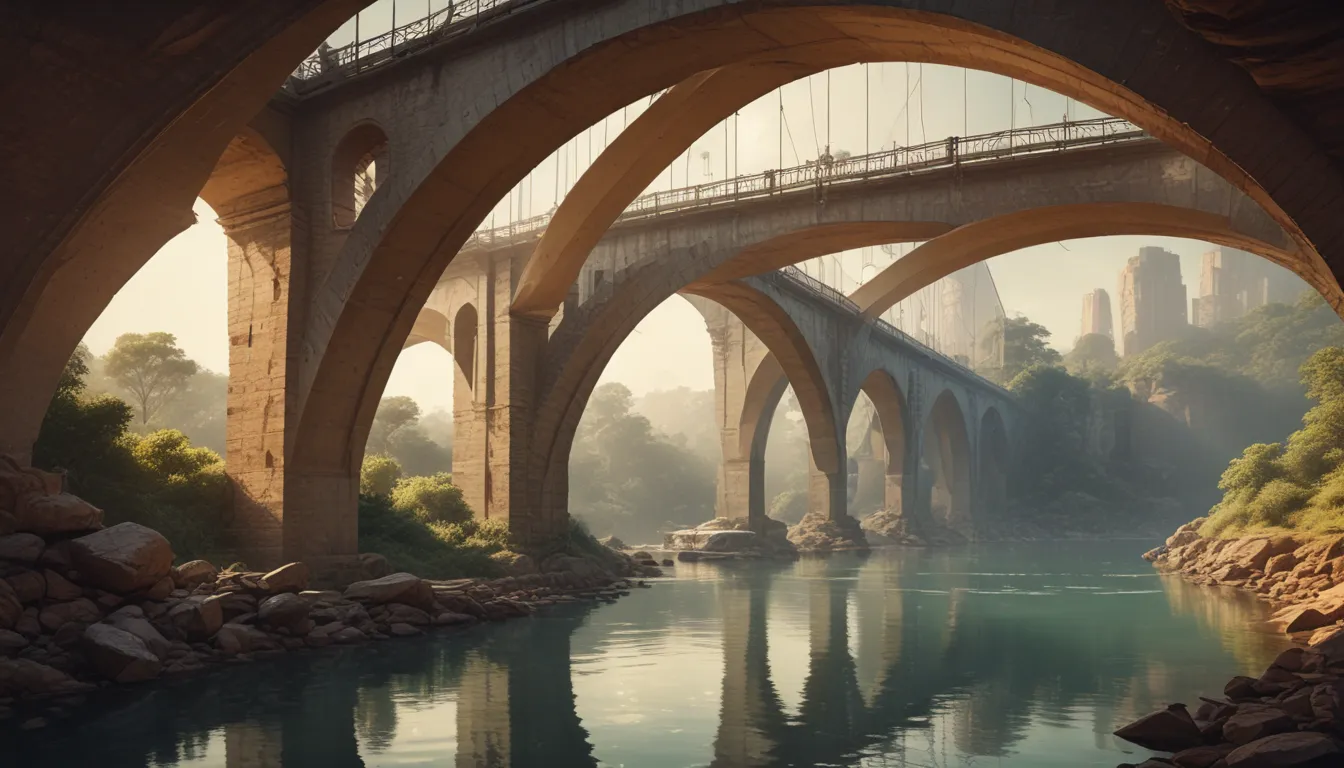A Note About Images: The images used in our articles are for illustration purposes only and may not exactly match the content. They are meant to engage readers, but the text should be relied upon for accurate information.
Welcome to the world of arch bridges, where timeless structures blend beauty with functionality to span vast waterways and valleys. From ancient Roman aqueducts to modern steel titans, arch bridges have captivated societies for centuries. These marvels of engineering have a rich history and fascinating design that enable them to support immense loads and withstand the test of time. Let’s embark on a journey to uncover 21 great facts about arch bridges that highlight their design, evolution, and significance.
Unraveling the Mystery of Arch Bridges
Arch bridges are unique structures that use a curved, symmetrical shape to span a space while supporting weight. Anchored at each end, arch bridges transfer forces of the load and their own weight into the supports, creating a stable and robust design that has stood the test of time.
Exploring Early Arch Bridge Examples
- The Arkadiko Bridge in Greece, dating back to around 1300 BC, is one of the oldest known arch bridges still in use today.
- The Romans, known for their engineering prowess, built many arch bridges that still stand today. The Pont du Gard in France, built in the first century AD, showcases the durability and strength of arch bridges.
Understanding the Mechanics of Arch Bridges
Arch bridges work by transferring weight into compressive forces down the curve of the arch into the abutments at each end. This design allows them to span large distances without the need for additional supports in the middle, making them ideal for crossing waterways and valleys.
The Evolution of Arch Bridge Materials
- Historically, arch bridges were built with stone or brick, materials strong under compression.
- Modern arch bridges may use reinforced concrete or steel, allowing for longer spans and more flexibility in design.
Iconic Arch Bridges Around the World
- The Sydney Harbour Bridge in Australia, opened in 1932, is the world’s largest steel arch bridge.
- The Ponte Vecchio in Florence, Italy, known for its shops, is a beautiful example of medieval stone bridge engineering.
The Strengths of Arch Bridges
- Arch bridges are not only aesthetically pleasing but also incredibly strong and durable, capable of withstanding heavy loads and adverse environmental conditions.
- Their efficient weight distribution makes them ideal for spanning waterways where mid-span supports are impractical.
Challenges in Arch Bridge Construction
- Building arch bridges requires precision engineering and craftsmanship to avoid structural failure.
- The complexity of their design and materials needed can make arch bridge construction more time-consuming and costly compared to other types of bridges.
Innovations in Arch Bridge Engineering
- Advances in materials science have led to lighter, stronger materials for arch bridges, reducing costs and construction time.
- Computer-aided design software has revolutionized the planning and construction of arch bridges, allowing for more complex and efficient designs.
Environmental Impact of Arch Bridges
- Properly designed arch bridges have minimal environmental impact, requiring fewer materials and minimal modifications to the landscape.
- Their longevity and durability reduce the need for frequent replacements or repairs, lowering their environmental footprint over time.
The Future of Arch Bridges
- Ongoing advancements in engineering and materials promise a bright future for arch bridges, with new designs and technologies making them more sustainable, efficient, and aesthetically pleasing.
- The integration of smart technologies into arch bridges could lead to structures that contribute to smart infrastructure, monitoring traffic, structural health, and environmental conditions.
Reflecting on the Timeless Appeal of Arch Bridges
Arch bridges, from their ancient origins to modern adaptations, stand as testaments to human ingenuity in engineering. Their durability, efficiency, and ability to withstand immense loads have ensured their enduring popularity throughout the centuries. As we marvel at these architectural wonders that connect us in more ways than one, let’s appreciate the rich history and significance of arch bridges in shaping our built environment.
Embracing the Wonder of Arch Bridges
Arch bridges, with their blend of aesthetics and functionality, have left an indelible mark on our built environment. As we continue to push the boundaries of engineering and design, arch bridges will remain steadfast symbols of human ingenuity and innovation. Let’s celebrate these timeless structures that bridge the gap between our past and future, connecting us across generations with their remarkable beauty and strength.






